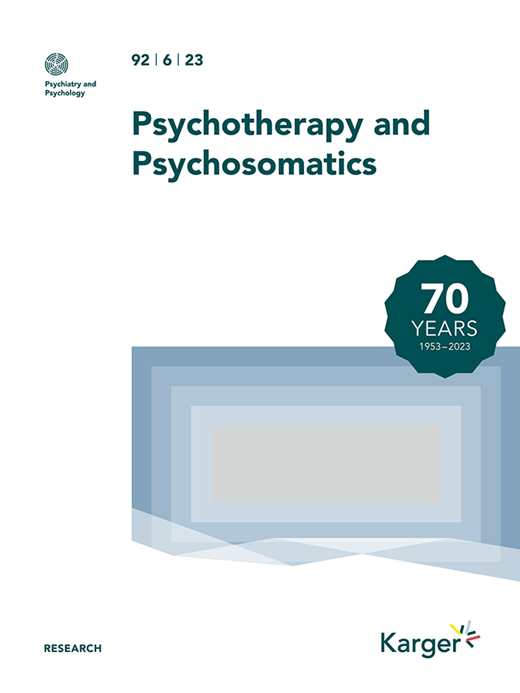在催产素的头部和心脏:一项研究自闭症儿童长期服用催产素对应激调节神经和心脏影响的随机对照试验
IF 16.3
1区 医学
Q1 PSYCHIATRY
引用次数: 0
摘要
鼻内给药催产素作为一种促进社会发展和减少与自闭症谱系障碍(ASD)诊断相关的残疾的新方法,正被越来越多地探索。鉴于越来越多的试验,深入了解在数周时间内多次、长期使用催产素所引起的神经可塑性变化是至关重要的。然而,到目前为止,催产素对儿童大脑的神经调节作用仍然未知。在这里,我们提出了一项双盲、随机、安慰剂对照的药物-神经影像学试验,研究了在青春期前学龄ASD儿童(8-12岁,45名男孩,12名女孩)中,为期四周的鼻内催产素给药方案(12 IU,每天两次)的神经效应。静息状态fMRI扫描和同时进行的扫描仪内心率测量分别在鼻腔喷雾剂给药前、后和给药后四周进行评估。在ASD儿童中,4周的慢性催产素治疗导致杏仁核和眶额叶皮层之间的内在功能连接显著减少,特别是在4周的随访中,从而复制了先前在成人大脑中观察到的神经调节变化。值得注意的是,观察到的杏仁核-眼窝额叶连通性的减少与自主应激调节的改善有关,这与高频心率变异性的增加有关。此外,催产素相关的神经和心脏自主神经作用被催产素受体基因的表观遗传修饰显著调节,这表明催产素诱导的应激调节作用在表观遗传甲基化降低的儿童中更为明显,因此催产素受体表达更高。最后,全脑探索性功能连通性分析也揭示了催产素诱导的杏仁核与突出网络区域(脑岛、前扣带皮层)耦合的整体增强效应,这可能反映了催产素诱导的(社会)突出效应。总之,这些观察结果为ASD儿童慢性催产素治疗诱导的应激调节神经和心脏效应提供了初步见解,并指出了重要的表观遗传调节剂,可以解释催产素诱导的反应的个体间差异。本文章由计算机程序翻译,如有差异,请以英文原文为准。
At the head and heart of oxytocin: An RCT investigating stress-regulatory neural and cardiac effects of chronic administration in children with autism
Intranasal administration of oxytocin is increasingly explored as a new approach to facilitate social development and reduce disability associated with a diagnosis of autism spectrum disorder (ASD). In light of the growing number of trials, it is crucial to gain deeper insights into the neuroplastic changes that are induced from multiple-dose, chronic use of oxytocin, over a course of weeks. To date however, the neuromodulatory impact of oxytocin in the pediatric brains remains unknown. Here, we present a double-blind, randomized, placebo-controlled pharmaco-neuroimaging trial examining the neural effects of a four-week intranasal oxytocin administration regime (12 IU, twice daily) in pre-pubertal school-aged children with ASD (8-12 years, 45 boys, 12 girls). Resting-state fMRI scanning and simultaneous, in-scanner heart rate measurements were assessed before, immediately after and four weeks after the nasal spray administration period. Four weeks of chronic oxytocin administration in children with ASD induced significant reductions in intrinsic functional connectivity between amygdala and orbitofrontal cortex, particularly at the four-week follow-up session, thereby replicating prior observations of neuromodulatory changes in the adult brain. Notably, the observed reductions in amygdala-orbitofrontal connectivity were associated with improved autonomic stress-regulation, indexed by increased high-frequency heart rate variability. Further, oxytocin-related neural and cardiac autonomic effects were significantly modulated by epigenetic modifications of the oxytocin receptor gene, indicating that oxytocin-induced stress-regulatory effects were more pronounced in children with reduced epigenetic methylation, and thus higher oxytocin receptor expression. Finally, whole-brain exploratory functional connectivity analyses also revealed an overall oxytocin-induced enhancing effect on amygdala coupling to regions of the salience network (insula, anterior cingulate cortex), likely reflective of oxytocin-induced (social) salience effects. Together, these observations provide initial insights into the stress-regulatory neural and cardiac effects induced by chronic oxytocin administration in children with ASD, and point toward important epigenetic modulators that may explain inter-individual variations in oxytocin-induced responses.
求助全文
通过发布文献求助,成功后即可免费获取论文全文。
去求助
来源期刊

Psychotherapy and Psychosomatics
医学-精神病学
CiteScore
29.40
自引率
6.10%
发文量
46
期刊介绍:
Psychotherapy and Psychosomatics is a reputable journal that has been published since 1953. Over the years, it has gained recognition for its independence, originality, and methodological rigor. The journal has been at the forefront of research in psychosomatic medicine, psychotherapy research, and psychopharmacology, and has contributed to the development of new lines of research in these areas. It is now ranked among the world's most cited journals in the field.
As the official journal of the International College of Psychosomatic Medicine and the World Federation for Psychotherapy, Psychotherapy and Psychosomatics serves as a platform for discussing current and controversial issues and showcasing innovations in assessment and treatment. It offers a unique forum for cutting-edge thinking at the intersection of medical and behavioral sciences, catering to both practicing clinicians and researchers.
The journal is indexed in various databases and platforms such as PubMed, MEDLINE, Web of Science, Science Citation Index, Social Sciences Citation Index, Science Citation Index Expanded, BIOSIS Previews, Google Scholar, Academic Search, and Health Research Premium Collection, among others.
 求助内容:
求助内容: 应助结果提醒方式:
应助结果提醒方式:


